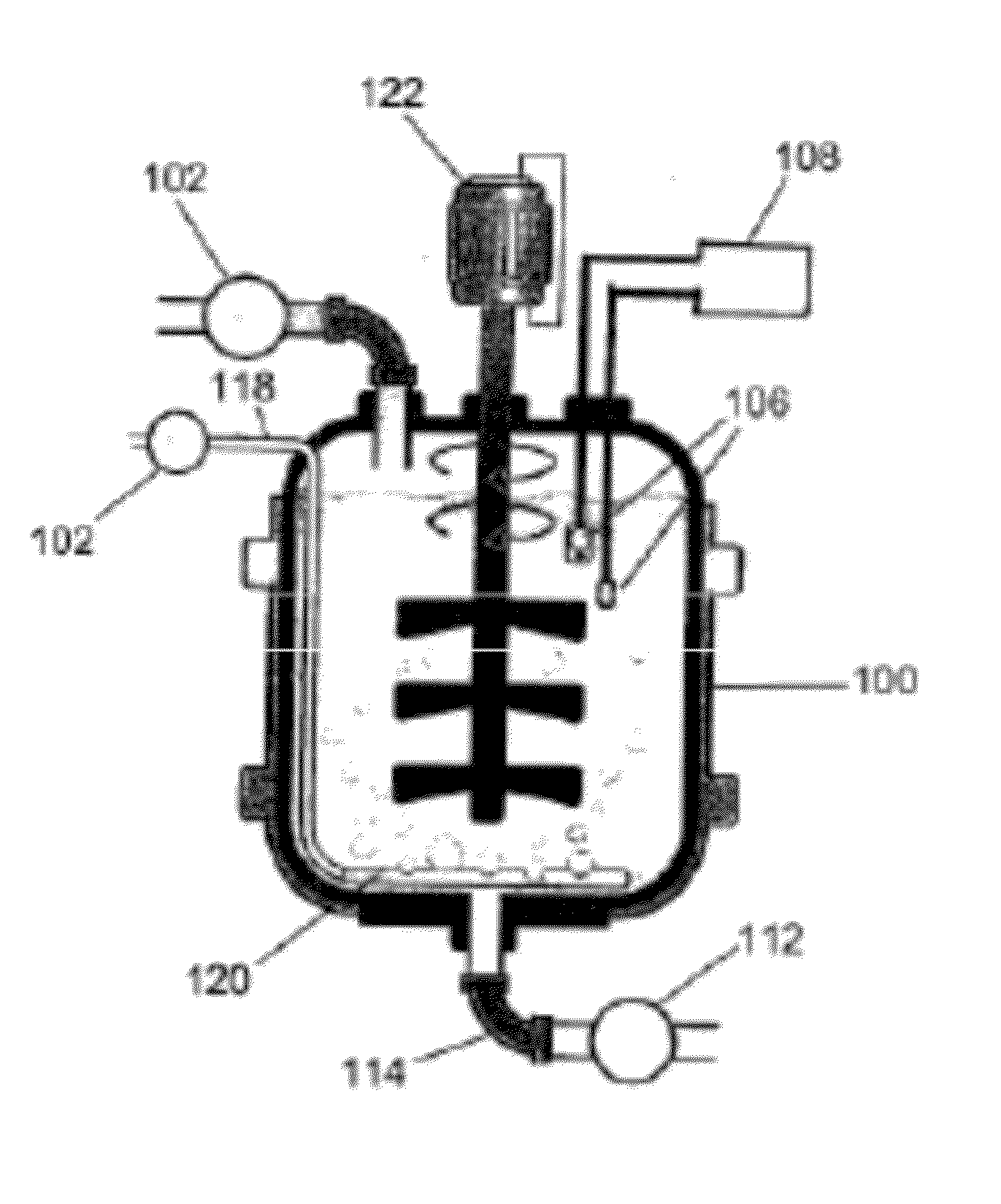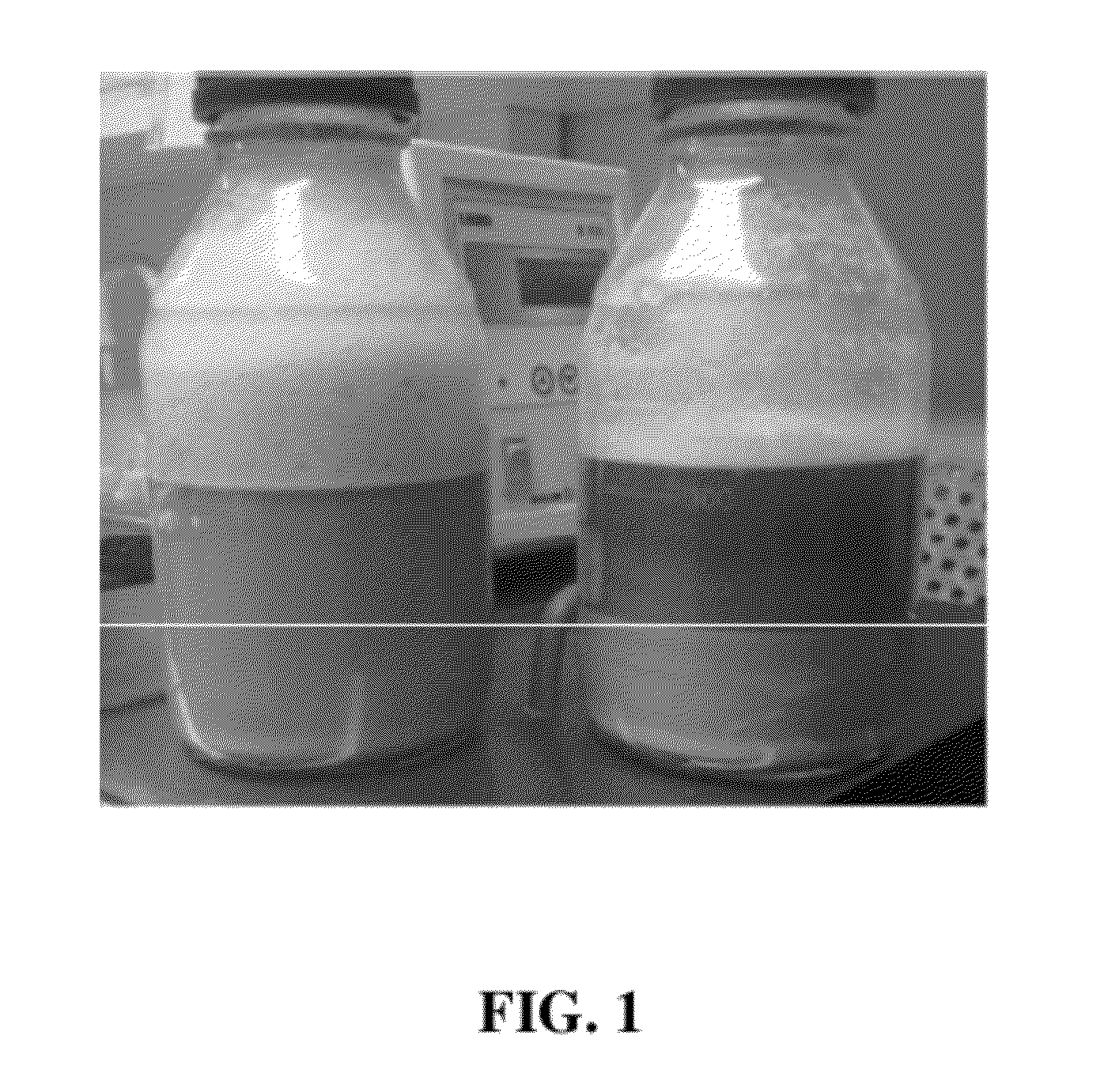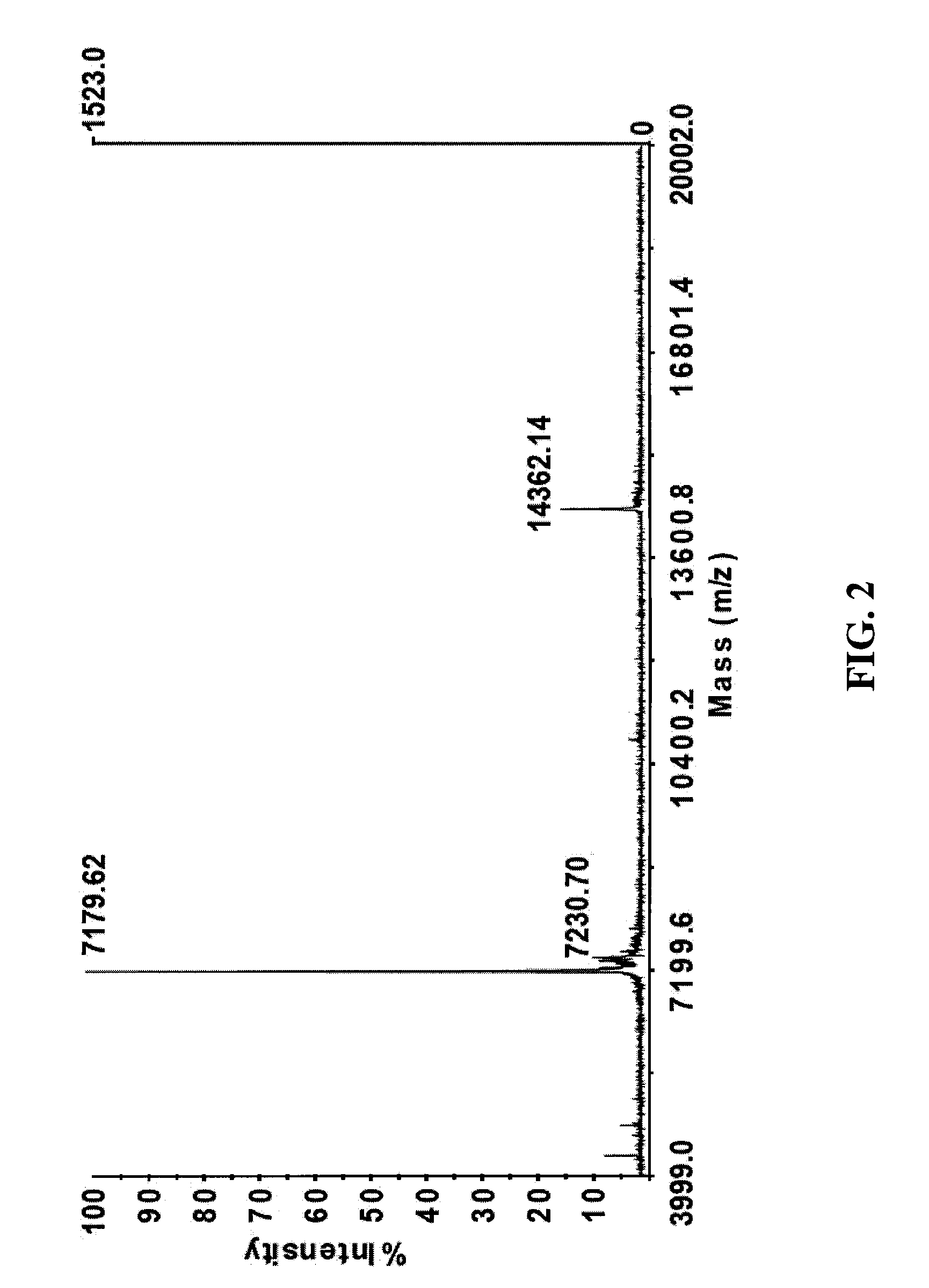Methods of foam control
a technology of foam control and foaming, applied in the field of methods of foam control, can solve the problems of limited availability and cost of biologically produced surfactants, affecting the production efficiency of foam, and affecting the quality of foam production,
- Summary
- Abstract
- Description
- Claims
- Application Information
AI Technical Summary
Benefits of technology
Problems solved by technology
Method used
Image
Examples
example 1
Clarified Unpurified Hydrophobin Solution
[0124]A method for reducing foam formation in a clarified hydrophobin solution using sodium sulfate and pH adjustment is presented herein. The hydrophobin solution was obtained using conventional production methods. The concentration of the hydrophobin solution was 33 g / kg. The sodium sulfate treatment was achieved by adding anhydrous sodium sulfate to reach a final concentration of 2.5% w / w with gentle mixing and allowed to dissolve. The pH was adjusted to 4.0 using 1% sulfuric acid. The solution was mixed at 10° C. for 16 hr. 2×5 mL of the Na2SO4 treated concentrate was centrifuged to remove the liquid portion. Each of the precipitates was resuspended to the same volume as the initial Hydrophobin concentrate in water. A spatula was used to loosen and resuspend the precipitates. 2×5 mL of untreated Hydrophobin concentrate was prepared. One of the concentrates and one of the Na2SO4 treated concentrates were mixed by shaking.
[0125]A picture wa...
example 2
Purified Hydrophobin Solution
[0126]A method for reducing foam formation of hydrophobin solution using heat is herein presented. The hydrophobin solution has a concentration of 130 g / kg. When 320 g of hydrophobin solution in a 500 mL Pyrex was mixed, foam filled the headspace of the bottle (picture on left, FIG. 1). When another similarly mixed hydrophobin solution was heated to 80° C., sediments formed and the foam collapsed (picture on right, FIG. 1). The results are presented in Table 2.
TABLE 2TreatmentInitial Volume (mL)After Treatment (mL)Overrun (%)None320>500>56%Heat Treated320350 9%Foam Reduction Index>6.2
example 3
Fermentation Using Conventional Technique
[0127]Table 3 describes the broth appearances of broth when a conventional approach for fermenting Trichoderma reseei expressing either recombinant cellulase or a recombinant hydrophobin. The fermentation media and conditions and the harvest procedure were the same. At the end of the fermentation, the target molecules being expressed were fully soluble in both cases. Table 3 shows the results.
TABLE 3CellulaseHydrophobinAntifoam Consumption0.3 g / kg-11.4 g / kg-harvest brothharvest brothFoam out during fermentationNoneYesOverrun0%240%
PUM
| Property | Measurement | Unit |
|---|---|---|
| surface tension | aaaaa | aaaaa |
| pH | aaaaa | aaaaa |
| pH | aaaaa | aaaaa |
Abstract
Description
Claims
Application Information
 Login to View More
Login to View More - R&D
- Intellectual Property
- Life Sciences
- Materials
- Tech Scout
- Unparalleled Data Quality
- Higher Quality Content
- 60% Fewer Hallucinations
Browse by: Latest US Patents, China's latest patents, Technical Efficacy Thesaurus, Application Domain, Technology Topic, Popular Technical Reports.
© 2025 PatSnap. All rights reserved.Legal|Privacy policy|Modern Slavery Act Transparency Statement|Sitemap|About US| Contact US: help@patsnap.com



